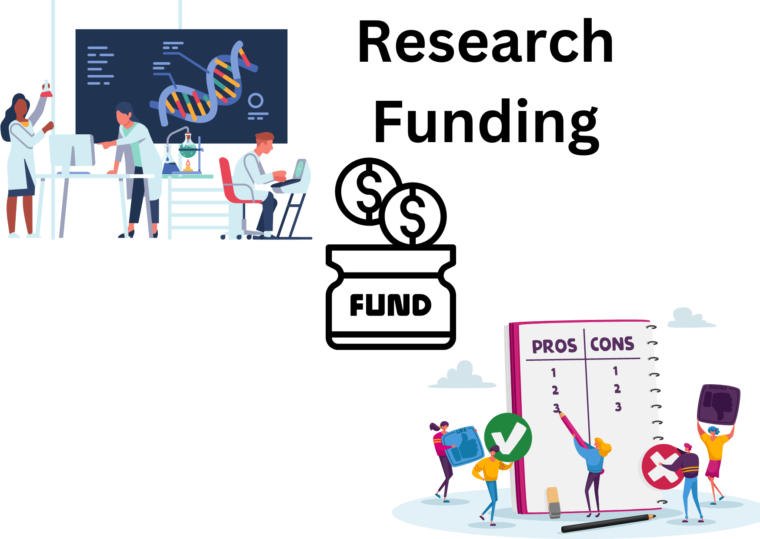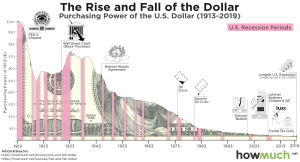Research funding impact is a crucial factor influencing the landscape of innovation and entrepreneurship in the United States. As the recent Harvard funding freeze demonstrates, the disruption of crucial financial support for scientific research can stifle progress and reduce the potential for economic growth. Without adequate funding, startups struggle to emerge from research institutions where groundbreaking ideas are often born. This situation threatens not only the startup ecosystem but also the broader foundation of U.S. economic vitality, threatening a ripple effect that could hinder future advancements in technology and medicine. Ultimately, the consequences of cuts to research funding could reshape the very fabric of entrepreneurship, impacting everything from innovation funding to the future viability of emerging businesses.
The impact of financial support for research extends far beyond immediate concerns, touching on various aspects of the innovation landscape. A funding freeze, akin to the recent disruptions at Harvard, could reverberate through various channels, affecting everything from technology advancement to the broader entrepreneurial environment. When research institutions lack necessary financial resources, the pathway to entrepreneurship is obstructed, leading to a decline in new startup formation. Moreover, diminished research capabilities hinder the critical development of breakthroughs that spur economic progression. Thus, the interplay between research funding and the growth of new ventures is essential for sustaining a vibrant and pioneering economy.
The Importance of Research Funding in the Startup Ecosystem
Research funding holds a pivotal role within the startup ecosystem, particularly at foremost institutions like Harvard. It not only supports groundbreaking scientific inquiries but also lays the groundwork for entrepreneurial ventures. With robust backing, research labs are transformed into innovation powerhouses, fostering an environment where vibrant ideas can evolve into successful companies. The interdependencies of research and entrepreneurship create a sustainable cycle: the more experimental success that arises from these labs, the greater the likelihood of nurturing new businesses that amplify U.S. economic growth.
Furthermore, the ramifications of funding cuts threaten not only immediate projects but also the long-term viability of startup creation. As evidenced by recent studies, for every dollar invested in federal biomedical research, there is a staggering return of $2.56 in economic activity. This strong connection signifies that restricted funding could lead to fewer innovations making the leap from research to marketable solutions, adversely impacting the entire startup ecosystem. In essence, when research funding faces threats, so does the foundation of entrepreneurial growth and economic dynamism.
Analyzing the Impact of the Harvard Funding Freeze
The recent funding freeze targeting over $9 billion allocated to Harvard has cast a shadow over the university’s research capabilities. The loss of access to critical funding, particularly from federal sources like the NIH, signifies an impediment not only to ongoing projects but to future scientific breakthroughs as well. As Jeffrey J. Bussgang notes, the startup ecosystem heavily relies on a steady flow of resources from research institutions. A halt in these funds can stifle innovations before they can be commercialized, ultimately affecting the momentum of entrepreneurship growth.
Moreover, the implications of the funding freeze extend beyond immediate project disruption. The gradual effects will likely manifest as fewer startups entering the market over the coming years. The cycles of innovation take time to cultivate; hence, disruptions in research funding today can result in a scarcity of successful ventures in the near future. This freeze, thus, poses an existential threat to not just Harvard but to the wider U.S. economy, particularly as we depend increasingly on startups to rejuvenate industries and navigate challenges.
Federal Funding: A Catalyst for Technological Advancements
Federal funding is crucial for tech and biomedical startups, serving as a catalyst for advancements that propel U.S. innovation. These financial resources create an infrastructure where research institutions can thrive, fostering the development of ideas that lead to medical breakthroughs and technological advancements. When laboratories are well-resourced, they can focus on generating groundbreaking solutions that have the potential for commercial viability.
The relationship between federal funding and entrepreneurship growth is apparent in the number of startups that emerge from research-driven technology transfers. The intentionality behind federal investments in research facilitates a rich environment for innovation, equipping budding entrepreneurs with the tools they need to convert ideas into successful businesses. In essence, this support reinforces the startup ecosystem, yielding substantial dividends for the U.S. economy as new companies manifest from these pioneering endeavors.
Navigating the Future of Entrepreneurship Amidst Funding Challenges
As we look towards the future, the current funding landscape poses significant challenges for budding entrepreneurs. The recent funding freezes, particularly those impacting prestigious institutions like Harvard, signal a potential decline in the number of startups entering the market. Despite the significant resources that lay dormant, the real danger lies in the long-term impact on entrepreneurial spirit and innovation. In an environment where financial support is crucial, the absence of directed funding can lead to a stagnation of inventive ideas waiting to be commercialized.
However, it’s also crucial to consider potential pathways for recovery and adaptation. The resilience of the startup ecosystem might enable it to navigate through these disruptions, but that resilience requires immediate attention to restoring research funding. Advocating for policy changes to facilitate access to these resources can forge a path toward revitalizing entrepreneurship and innovation. It is imperative that stakeholders across the research and business sectors work collaboratively to ensure that momentum is regained, ultimately securing U.S. economic growth for the future.
The Role of Research Universities in Fostering Innovation
Research universities play an instrumental role in sparking innovation and creativity, serving as incubators for future entrepreneurs. The combination of diverse research facilities and a vibrant educational curriculum equips students and faculty alike to pave their own entrepreneurial paths. The presence of dedicated technology licensing offices and entrepreneurial mentorship creates a robust support system that addresses both the practical and theoretical aspects of starting a business.
Moreover, these institutions attract high-caliber talent, drawn to environments that prioritize groundbreaking research and commercial applicability. The dynamic interaction between students and experienced faculty enhances the likelihood of generating cutting-edge technologies. By fostering relationships between academia and industry, research universities not only contribute to the startup ecosystem but also play a significant role in driving U.S. economic growth.
Understanding the Risk-Opportunity Paradigm in Entrepreneurship
When discussing innovation and funding, understanding the risk-opportunity paradigm is essential. Institutions like Harvard emphasize the significance of transforming perceived risks associated with entrepreneurship into opportunities for growth. The structured support provided through entrepreneurship programs prepares students to navigate the uncertainties inherent in launching new ventures. This proactive approach highlights the intentionality behind fostering an entrepreneurial mindset within the student body.
Instead of viewing obstacles as threats, many emerging entrepreneurs learn to leverage risk for potential reward. This approach is especially relevant in the context of the funding freeze, where adapting to changing circumstances is vital. As research funding faces challenges, navigating these waters with creativity and resourcefulness can drive innovation, allowing students and faculty to pivot toward new methodologies and opportunities that could fill gaps left by traditional funding sources.
Linking Economic Growth and Innovation Funding
There is a profound connection between innovation funding and U.S. economic growth. Research indicates that increased funding leads to enhanced outputs in innovation, thereby invigorating the economy. This funding is more than just monetary support; it’s an investment in the intellectual capital poised to solve real-world problems. By harnessing Federal funds, institutions can not only pursue enlightening research but also foster environments where startups thrive, crucial for sustainable economic growth.
Moreover, economic downturns highlight the essential role of federal funding that stimulates research and development. Past analyses have shown that periods of lower investment contribute to slower economic recovery rates. Therefore, it is imperative for policymakers to recognize the significant benefits that come from sustaining and enhancing funding for research. The rapid mobilization of resources toward projects pioneering new technologies can foster a recovery and growth trajectory, placing the U.S. at the forefront of global innovation.
The Entrepreneurial Pipeline and Its Implications for Society
The entrepreneurial pipeline is a crucial framework that depicts the journey of innovation from research to marketable products. Research universities serve as the starting point, where promising ideas are nurtured and developed by students and faculty alike. The barriers that arise from funding freezes can significantly stifle this pipeline, leading to delayed or abandoned ventures. The implications of this disruption extend beyond just the academic environment, as the local and national economies rely on these emerging startups to fill gaps and create jobs.
Strong linkages between entrepreneurship education and federal research funding empower the next generation of business leaders to pursue their innovative visions. As such, maintaining robust funding channels is paramount to ensuring that the pipeline remains active and efficient. When universities can offer substantial support through access to resources and mentorship, innovation flows more freely, catalyzing a wider economic impact that fuels job creation and economic resilience.
Collaborative Ventures: The Path Forward for Startups
Collaboration is a vital element of fostering a thriving startup ecosystem. By encouraging partnerships between research institutions, industries, and investors, the potential for unlocking novel innovations dramatically increases. Startups benefit from the wealth of knowledge and resources that established entities can provide, turning theoretical concepts into practical applications. This is especially important in times of funding uncertainty, where shared resources can help mitigate the risks associated with solo ventures.
In conclusion, fostering a collaborative spirit within the entrepreneurial ecosystem not only promotes diverse innovation pathways but also strengthens the fabric of the economy. As the landscape evolves amid varying funding opportunities, the importance of building bridges between research and commercial sectors becomes increasingly clear. Ensuring that startups have access to necessary resources, including research funding, is crucial for driving long-term economic growth and securing a robust environment for entrepreneurship.
Frequently Asked Questions
What is the impact of research funding on the startup ecosystem in the U.S.?
Research funding plays a crucial role in nurturing the startup ecosystem. It provides resources for universities to conduct innovative research, which can lead to the development of new technologies and companies. When funding is secure, startups can emerge from university labs, contributing significantly to U.S. economic growth.
How does innovation funding influence U.S. economic growth?
Innovation funding is essential as it stimulates research and development activities, leading to breakthroughs that can drive economic growth. Federal investments in research generate substantial returns, often exceeding $2.56 for every dollar spent, illustrating its importance in enhancing U.S. productivity and fostering entrepreneurial activities.
What are the consequences of the Harvard funding freeze on entrepreneurship growth?
The Harvard funding freeze has the potential to hinder entrepreneurship growth by limiting access to crucial research resources. As grants are delayed or denied, the pipeline for new startups will diminish, reducing the number of innovative companies that can help propel U.S. economic growth in the coming years.
Why is federal funding critical for the success of biomedical startups?
Federal funding is vital for biomedical startups as it underpins extensive research efforts that lead to transformative health solutions. Without this support, the capacity for labs to produce groundbreaking medical innovations is severely affected, ultimately impacting the startup ecosystem and U.S. economic growth.
How do faculty and student interactions contribute to innovation funding outcomes?
Faculty and student interactions serve as a bridge between academia and the startup ecosystem, fostering environments where ideas turn into commercial ventures. Universities like Harvard leverage this dynamic to create pathways that facilitate innovation funding, enabling aspiring entrepreneurs to launch successful startups.
What are the anticipated long-term effects of federal funding cuts on the U.S. innovation landscape?
The long-term effects of federal funding cuts are likely to manifest in reduced startup creation and diminished innovation. Over 1 to 3 years, we could see significant impacts on the number of new companies emerging, which would ultimately stymie U.S. economic growth and the competitive edge in global markets.
Can the damage from the funding freeze be reversed, and how long might it take?
Reversing the damage from the funding freeze is possible, but it may take 1 to 3 years for the effects to materialize fully. This timeline reflects the natural incubation period for research ideas to develop into commercially viable enterprises and enter the market, affecting the overall startup ecosystem.
How does the interplay between research universities and venture capital shape innovation funding?
Research universities act as incubators within the startup ecosystem, fostering collaboration with venture capitalists that result in innovation funding. This symbiotic relationship leads to the commercialization of research breakthroughs, stimulating entrepreneurship growth and enhancing economic development.
| Key Point | Details |
|---|---|
| Research Funding Threats | Federal funding freeze of over $2 billion in research grants at Harvard due to administration demands. |
| Impact on GDP | Predicted GDP shrinkage by 3.8% if funding cuts are implemented, echoing the Great Recession effects. |
| Role of Research Universities | Universities serve as a key source of innovation and startup development, crucial to the economy. |
| Entrepreneurship and Startups | Students and faculty at institutions like Harvard create numerous startups through structured entrepreneurship programs. |
| Long-term Effects | Impact of funding cuts will take 1-3 years to be fully realized in the startup ecosystem, with fewer startups likely emerging. |
Summary
Research funding impact is a crucial issue facing the future of innovation and entrepreneurship in the United States. The current freeze on federal grants threatens not only the operational integrity of research universities but also the overall economic vitality associated with scientific advancements. As funding is essential for nurturing new ideas, its absence leads to hiring freezes, halted initiatives, and a significant decrease in the formation of promising startups. The ripple effects of these funding cuts may take years to fully understand, but the potential for innovation and job creation will undeniably be stunted, further demonstrating the importance of maintaining robust research funding initiatives.




